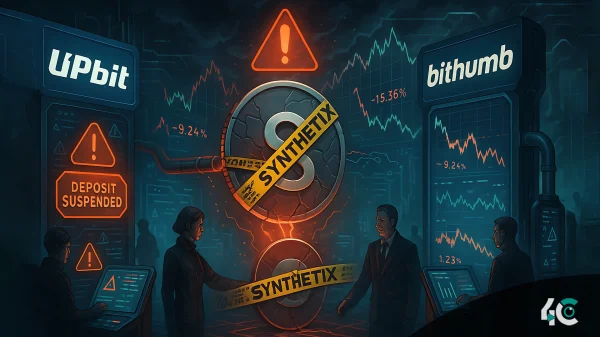To track the activity on the Bitcoin network, an on-chain metric known as “Coin Days Destroyed” was introduced in 2011 as one of the first on-chain metrics. On-chain analysis can be used to improve investment and trading decisions by examining the fundamental factors associated with cryptocurrencies.
It is possible for traders to improve their trading strategies and position management with public blockchain information, which is an attractive prospect for traders.
Cryptocurrency trading is most often analyzed through the study of price action, known as technical analysis. Public blockchains like Bitcoin and Ethereum, however, provide a wealth of information that ordinary assets cannot offer. These insights can complement other forms of analysis.
What is on-chain data?
On-chain transaction is any transaction that occurs on a specific blockchain, or to put it another way, all information that is written in a Blockchain block. If the Blockchain is public, this information can be seen by anyone. In general, data is divided into three categories:
- Transaction data (e.g. Addresses, amounts transferred, and remaining amounts at a specific address)
- Block data (e.g. timestamps, miner fees, rewards)
- Smart contract code (i.e. codified business logic on a Blockchain)
On-chain analysis and metrics
A study of public blockchain transactions using on-chain analysis will help better inform decision-making by extracting and analyzing the huge amount of data available. Traders and investors use its tools and techniques regularly.
Coin Days Destroyed, introduced to track bitcoin network activity in 2011, was one of the first on-chain metrics to become popular. Upon launching the Network Value-to-Transaction (NVT) ratio, Coin Metrics created broader interest for on-chain analysis techniques by taking into consideration both network usage and Bitcoin market capitalization.
Today, a wide variety of on-chain indicators are available, many of which are more sophisticated. The next section of this article presents different on-chain data and analytics tools for users to take a look at on-chain indicators and play around with them.
Popular providers of on-chain data and analytics tools
Running a node, storing, and maintaining a copy of an entire Blockchain requires a considerable amount of time, effort, and money that isn’t within the reach of every individual or organization. This is an even more challenging task than gathering, structuring, and analyzing the Blockchain data captured. In the last few years, a number of companies have emerged that have dissected on- and off-chain data and are available to users. This brief summary includes 8 prominent Blockchain data providers:
Coin Metrics
Coin Metrics, founded in 2017, provides investors with resources to learn all they need to know about all major cryptocurrencies. Their products include:
- Tools for visualizing network data, on-chain exchange flows, coin age metrics, transaction histories, etc.
- Market data covering the top 20 global exchanges
- Indexes
- Data from third parties (e.g. Twitter sentiment) complement Coin Metrics’ product portfolio.
With Coin Metrics’ product portfolio, users can also create formulas, generate legacy charts, and follow reference rates.
Glassnode
A Swiss company, Glassnode, has become a hugely influential player in the Blockchain space with its range of innovative on-chain indicators. Thanks to its user-friendly platform, the company’s online platform is easy to use. You can access a wide variety of data points even with the free plan. Also, Glassnode publishes regular on-chain insights reports in-depth.
Dappradar
Dappradar is a service which tracks over 3,000 Decentralized Applications (Dapps) in real-time. It serves as a central platform for accessing rankings of popular applications running on distributed computing systems. As well as serving as a distribution platform, Dappradar also provides developers with advertising facilities for their Dapps.
Dune Analytics
Dune Analytics mostly deals with Ethereum on-chain data and provides users with self-explanatory graphs and reports by decoding Ethereum smart contracts. Data from on-chain cryptocurrency transactions is used to generate market insights and reports on Ethereum Analytics.
IntoTheBlock
There are four main categories for IntoTheBlock’s Blockchain indicators:
- Ownership (insights based on ownership concentration)
- Financials (covers price information, which can be used to investigate profitability / the monetary value of transactions)
- Network (traffic patterns, transaction costs, user growth)
- Social (Social Profiles, groups, channels and Github metrics).
Xangle
By combining data from off-chain and on-chain, Xangle provides a 360-degree overview of a broad range of Blockchain assets. Xangle’s dashboard pages display project-specific statistics.
CryptoQuant
Bitcoin, Ethereum, and stablecoins are the focuses of CryptoQuant, a Seoul-based Blockchain data solution provider. You can access its data via API or directly in Python, R, and Excel.
1) On-chain data
2) Exchange data
3) Miner data
4) Network data
Anyblock Analytics Index
Anyblock offers data and tools for blockchain projects as well as consulting services. Visitors to Anyblock can scan, explore, and discover data in real-time for 22+ Ethereum- and Bitcoin-based products.
Other notable Blockchain data providers include Dapp.com, Elementus, and Alethio.
Santiment/Sanbase
Santiment provides a comprehensive suite of on-chain metrics, explanations, and visualizations. Also, there is a lot of work being done to develop new on-chain metrics and to optimize the existing ones.
The service offers both free and paid membership options. You can access Google Sheets data from Sanbase using the spreadsheet plug-in.
CQ.Live
Every trader should own CQ.Live because it can be used to analyze exchange flows, miner flows, and inter-entity flows. Besides providing data on Bitcoin, Ethereum, and stablecoins’ on-chain metrics, the website also provides information on other crypto metrics.
How does on-chain analysis work?
A cryptographic asset’s HODL status, crypto market capitalization, and future prospects can all be found among the various metrics for on-chain analysis.
Market Capitalization
Blockchain network value is derived from a cryptocurrency’s market capitalization. A network’s worth is calculated by multiplying the price of a crypto with the total supply of the crypto. In addition to assessing the network’s worth, market capitalization can help us determine the market size, adoption, and risks the asset involves.
Hold Status
In order to calculate the market trend and the age of the cryptocurrency, analysts use the HODL wave metric. Analysts are able to tell HODLing or selling assets by the level of HODL wave. Based on this indicator, HODLers can determine whether they anticipate a price increase or a price drop, as well as the mood of the market.
Coin concentration metrics are also used by on-chain analysts to determine the concentration of “whales” and large investors. For example, if there is an asset where a few addresses possess a large percentage of the token, this can easily lead to a manipulation of the market by large-scale investors. Therefore, minimizing crypto investment risks requires an analysis of the concentration of large token holders.
Future Prospects of a Cryptocurrency
Analyzing open interest can provide insight into whether a cryptocurrency asset is attracting or losing investors. The token price should also be correlated with the Bitcoin price, as well as exchange inflows and outflows.
When an altcoin or token’s price is linked to Bitcoin, the risk for investors is reduced, as it can lead to lower losses for crypto assets whose price is highly dependent on the volatility of Bitcoin. A change in inflows or outflows of certain tokens or coins from an exchange (over time) can help on-chain analysts assess an asset’s adoption status while also providing high net-worth individuals and institutional investors with an indication of trading activity in the asset or token.
How to Use On-chain Analysis for Crypto?
In light of the transparency of cryptocurrency and blockchain data, on-chain analysts will be able to provide more comprehensive assessments of the crypto market based on concrete data and a fundamental approach rather than following their emotions.
Predict future market movements
Traders can enhance their strategies and predict future market movements by observing investor behavior and network health in real-time using on-chain analysis. Crypto traders can predict whether interest in a cryptocurrency will increase or decrease based on the number of active addresses and transactions. An increase in active addresses and transactions is usually accompanied by a rise in the price of cryptocurrencies.
Study investor behaviors
A number of investor behaviors can also be determined by on-chain metrics. An on-chain analyst can examine, for example, how long an address has been holding a cryptocurrency and how many investors HODL it. Increasing HODLing may mean that the crypto’s circulating supply will be lower if more investors are hodling it. If demand for this cryptocurrency remains constant, on-chain analysis tells us that the price should increase. Furthermore, on-chain analysis shows that this asset is likely to perform well in the future.
What are the Limitations of On-chain Analysis?
On-chain analysis is still in its infancy, and given the small backlog of data, the metrics may evolve due to emerging trends, or new metrics may be introduced as the industry matures as a result of new insights.
In order to compare on-chain metrics across multiple crypto-assets, care must be taken. Ethereum’s blockchain is used for a wide range of applications while Bitcoin’s blockchain is focused on creating digital gold. On the other hand, if on-chain metrics are improving, then this is a good sign.
On-chain analysis has some limitations, including the following:
- The historical data for Bitcoin is less than a decade old (and even less for more recently launched crypto-assets). In the event of conflicting data, certain metrics may become less reliable over time.
- The Lightning Network and sidechains of Bitcoin, Plasma, and zkRollups of Ethereum may reshape the way that we measure the volume of transactions on-chain, which in turn may skew indicators based on throughput on-chain. It may be necessary to adjust interpretations of these metrics over time to account for changes in on-chain activity.
- As these metrics usually produce actionable signals in the longer-term market cycle, on-chain analysis may not have much value for scalpers/short-term traders. Yet short-term traders might benefit from the more granular data they have access to when they run their full node or by combining on-chain insights with order book data and technical analysis. To identify critical support and resistance zones, on-chain positions can be compared with order book data. Blockchain analysis can also be used as a basis for technical signals to help enter a trade.
Conclusion
Considering that data is increasingly considered the new gold and Blockchain is poised to transform how (digital) value is being stored and traded, emerging on-chain analytics practices are extremely relevant. There have been a variety of players emerging over the past few years, offering their users a variety of easily-applied on-/off-chain indicators and data sets. However, not all indicators will prove insightful over time. Even so, on-chain analysis is a phenomenon that is likely to persist as Blockchain technology gains more traction.
A crypto trader can examine the on-chain analysis to gain real-time insights into a blockchain network. Thus, they can take advantage of the advantages offered by a more data-rich and transparent crypto market.



































